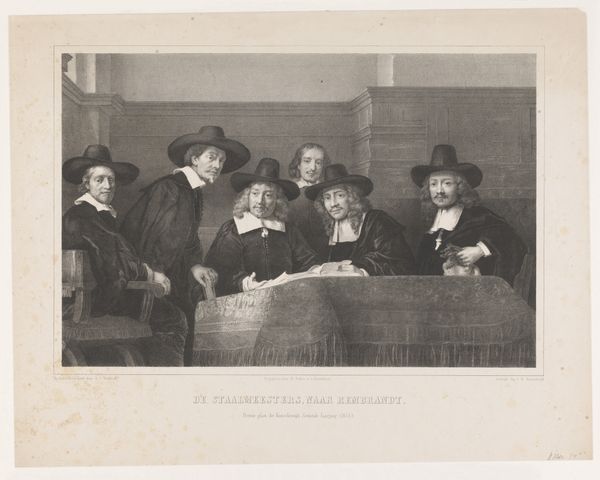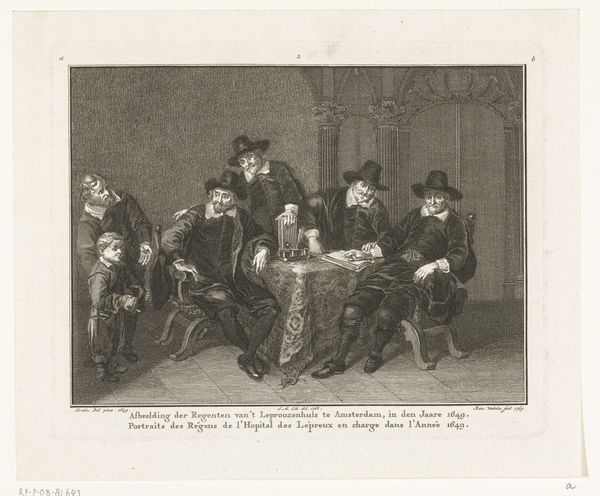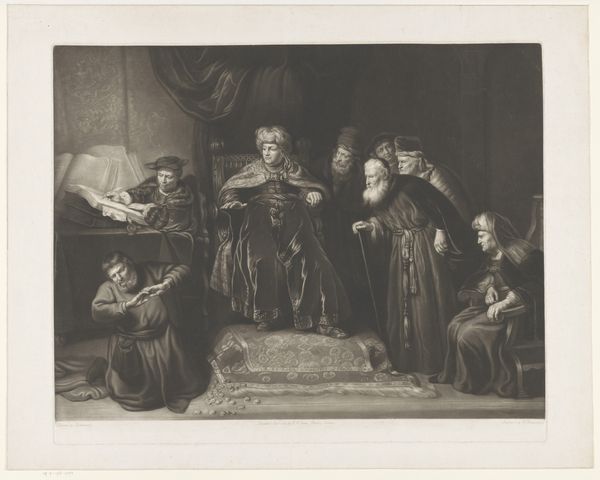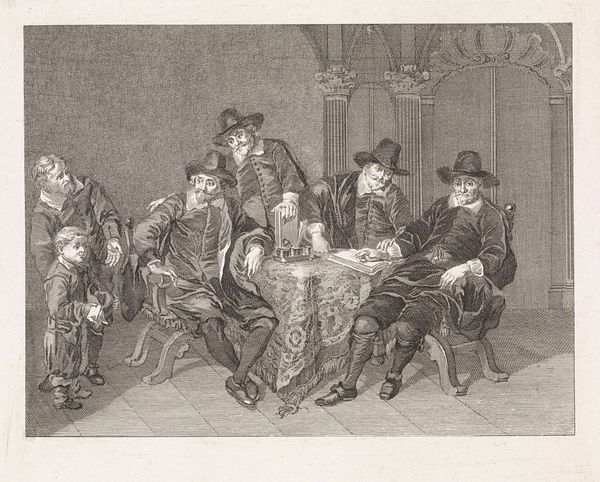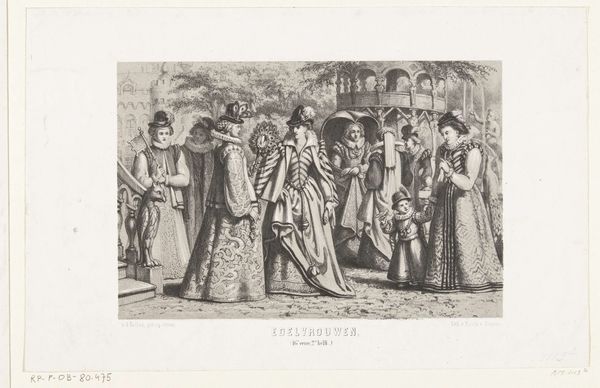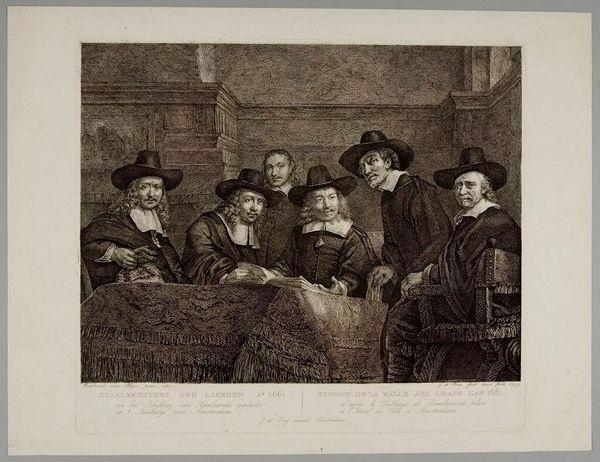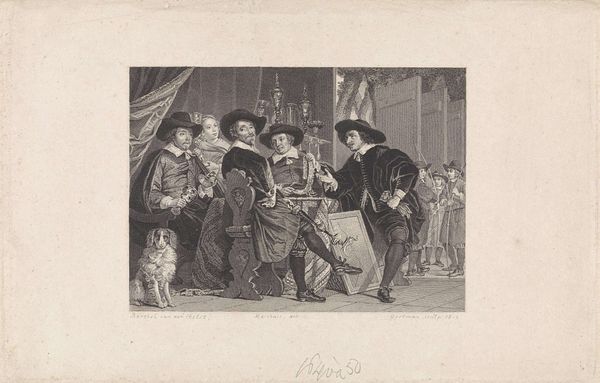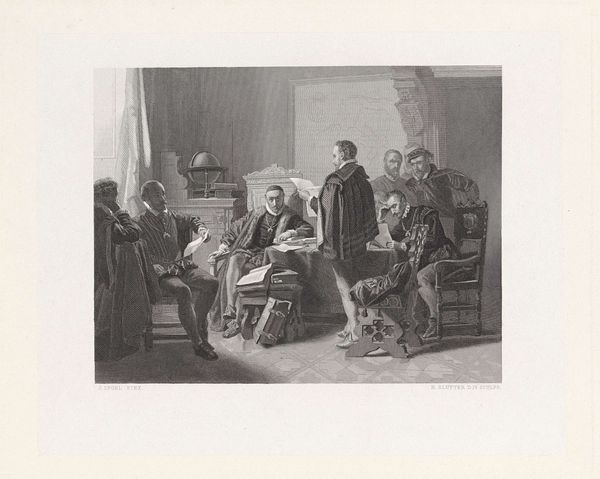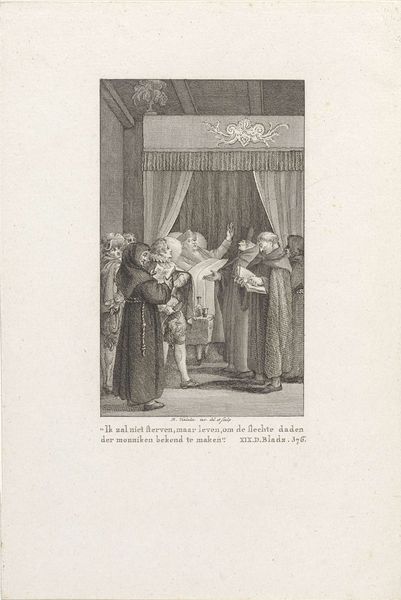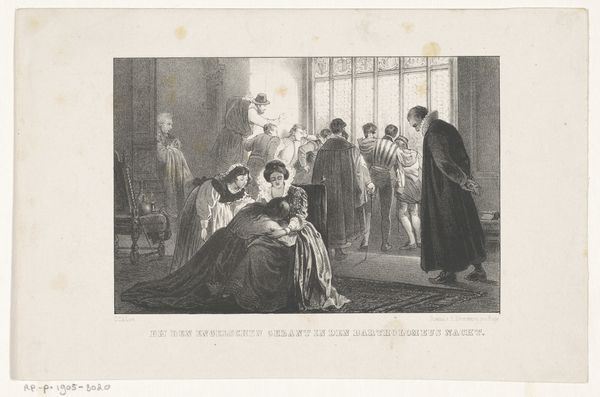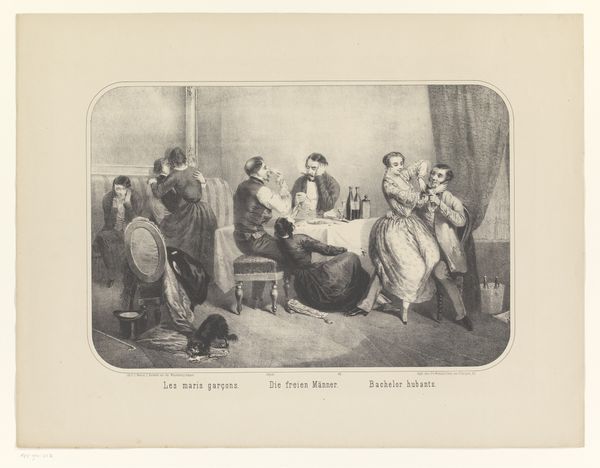
De vier Amsterdamse burgemeesters wachtend op het bericht van de aankomst van Maria de´ Medici, 1638 1638
0:00
0:00
print, engraving
#
portrait
#
baroque
#
dutch-golden-age
# print
#
historical photography
#
cityscape
#
history-painting
#
engraving
Dimensions: height 321 mm, width 379 mm
Copyright: Rijks Museum: Open Domain
Curator: This is an engraving from 1638, titled "The Four Amsterdam Burgomasters Waiting for News of the Arrival of Maria de' Medici," made by Jonas Suyderhoef after a design by Pieter Danckerts de Rij. It captures a moment laden with political significance. Editor: My immediate reaction is one of subdued anticipation. There's a palpable tension hanging in the air, even though the scene appears still. It feels incredibly staged, too, almost like theater. Curator: Precisely. The staging speaks volumes about the constructed nature of power and the public image the burgomasters wanted to project. Amsterdam, as a powerful trading hub, saw this royal visit as an opportunity to further cement its status and leverage its global image. Maria de’ Medici’s visit was, of course, much more politically complex. Editor: Yes, and that staging raises questions. Who were these men really, behind these official portraits? What was their relationship to the wider Amsterdam population, beyond their role as burgomasters? Curator: Suyderhoef and Danckerts depict them as serious men engaged in state business, conveying an impression of civic responsibility. The visual rhetoric aims to reinforce the established power structures of the time, a society increasingly driven by mercantile interests. Editor: You're right. Yet, within that structured composition, I notice little hints of individual personalities. The burgomaster standing seems anxious or at least alert. The detail in their garments feels almost obsessive in its pursuit of wealth through ornamentation. But are we seeing a true likeness or an idealized version of governance? I am always wary of depictions of authority. Curator: This print served as both a commemoration and a declaration of Amsterdam's political and economic clout. It embodies the self-assuredness characteristic of the Dutch Golden Age and is interesting since engravings were popular as reproduction tools that helped share information, in a way that parallels today's internet. Editor: As an activist, this reminds me of the crucial role images play in constructing and contesting power. By understanding how art served political agendas, we can better unpack the subtle messaging embedded within visual culture today. What strikes you most now about the scene? Curator: Thinking of it in contemporary terms, I see how political stagecraft transcends eras. The orchestration, the careful posing, all of these strategies persist in contemporary governance to this day. It also makes me consider how political leaders use such crafted events to advance their personal aims. Editor: Indeed. I am now most moved by the recognition of how those with power seek to solidify it. Even in seemingly simple portraits, there's a web of social and historical meaning waiting to be unwoven, holding a dialogue between what the portrait tells and what it intentionally hides.
Comments
No comments
Be the first to comment and join the conversation on the ultimate creative platform.
